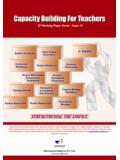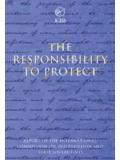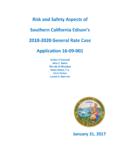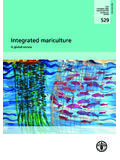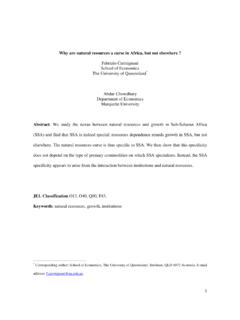Transcription of 15. Zimbabwe: Survey of Financial Institutions
1 15. zimbabwe : Survey of Financial Institutions I. General background and marketplace The Cleaner Production Centre of zimbabwe (CPCZ) embarked on a series of interviews with Financial Institutions (FIs) that operate in the country. The aim of interviews was to provide an overview of past and present investment practice and identify the types of funding available in zimbabwe for CP projects. zimbabwe 's Financial sector is relatively sophisticated, consisting of a Reserve Bank, discount houses, commercial banks, merchant banks, finance houses, building societies, the Post Office Savings Bank, numerous insurance companies and pension funds and a stock exchange. As a result of the liberalization of the Financial sector in 1991, the establishment of local banks has grown considerably.
2 The Reserve Bank of zimbabwe (RBZ) expect that this is likely to improve efficiency and lead to an expansion of a range of Financial sector products available on the market. Barriers to entry are currently low which means that market differentiation is not made particularly on price but on customer segmentation. This has led to a tailoring of services towards the relatively wealthy personal sector; high net worth individuals and the top end of the corporate markets. Whilst all of the commercial banks will compete for the business of the transnational corporations there is relatively little servicing of the lower end of the corporate market. For example there is no venture capital house within the country that will consider funding start up situations.
3 However, zimbabwe 's Financial system came under great stress in 1998 with the collapse of the United Merchant Bank. One response by RBZ was to increase the capital adequacy requirement for banks, compared to the internationally accepted minimum ratio of 8%. This has also brought about a greater awareness of the importance of credit policies and the need for regular assessment of assets. The investment climate at present is very difficult with minimal investments made in view of inflation (60%), interest rates (MLR is 55%) and the structure for capital allowances (4 years). The EIU rates zimbabwe 's banking sector as high risk, which they attribute to Government intervention during the past two years. Amongst the 51 FIs that operate in zimbabwe , 11 were selected for interviewing.
4 They are: International Finance Corporation Harare (IFC). Barclays Bank zimbabwe African Project Development Facility (ABDF). zimbabwe Development Bank (ZDB). zimbabwe Banking Corporation Limited (ZBCL). Merchant Bank of Central Africa Limited (MBCA). UDC Holdings Limited (UDC). First Banking Corporation Limited (FBCL). 84. First Merchant Bank of zimbabwe Limited (FMBZ). Zimbank - Retail Sector Standard Chartered Bank zimbabwe Limited (SCZL). The ZCPC also interviewed the Reserve Bank of zimbabwe (RBZ) and zimbabwe Bankers Association (ZBA). The FIs that were interviewed are active in a diverse spread of sectors, with a particular focus on tobacco and agriculture. A number of banks provide special credit lines to the tobacco industry, which is zimbabwe 's main commodity export product.
5 The only other exception is the zimbabwe Development Bank, which focuses on the transport and construction industries. A majority of FIs are active within zimbabwe and some banks, such as the African Development Bank and IFC, have a presence in the region. A majority of finance available in zimbabwe is considered short- to medium-term, with the length of investment ranging from usually 1-5 years. The average size of investment is relatively small, which is symptomatic of the unavailability to long-term finance. This is generally made through leasing instruments for plant and machinery and typically will be less than US $ 20,000. Larger financing requirements are very much dependent on the level of foreign exchange earnings the corporate may generate.
6 The type of finance available in zimbabwe is described in the table below. Types of funding Company Types IFC Term loans Equity finance Barclays Bank zimbabwe Term loans Equity finance APDF ? ZDB Leasing ZBCL Term loans Overdrafts MBCA Working capital Project finance Overdrafts UDC Leasing FBCL Equity finance FMBZ Trade finance Project finance Zimbank Term loans SCZL Working capital 85. A number of commercial and development banks provide leasing, equity and project finance, which are geared mostly towards the needs of CP investments. Interest rates, however, make the prospects of borrowing less commercially viable for companies, especially small- and medium-sized enterprises. Environmental considerations Among the 11 FIs interviewed by ZCPC, four banks have an environmental policy.
7 These banks include the IFC, APDF, Barclays and FMBZ. The FBCL is currently drafting a policy and the UDC is considering the adoption of one. The IFC prompted the FMBZ to build environmental considerations into their business practice as a consequence of having a credit line through IFC since 1993. The arrangement requires EIAs to be undertaken, with mitigation components included. They also liase with IFC specialists and, as a result, they have adopted an environmental risk policy. The FMBZ have one of 10 officers trained in this area. The UDC, which is the largest established leasing company in zimbabwe with operations throughout the region, are negotiating a US$ 5 million credit line with the IFC, based on a three year term that incorporates an environmental audit.
8 In light of the potential agreement, the UDC is considering their position regarding an environment policy. The FBCL, which is the newest commercial bank in zimbabwe having been established in August 1997, is currently drafting an environmental policy. The bank was prompted by the Board's concerns relating to reputational risk and competitiveness. The FBCL is also creating a training course for credit officers, which may include an environmental component. Only three of the 11 FIs conduct environmental audits. This is mostly driven by the activities of the IFC. The banks include the IFC, APDF and Barclays. APDF conduct their own audits as well as those on behalf of the IFC. Barclays have a special risk unit, which assesses environmental risk.
9 The APDF. provides a model that might be used for cleaner production investment promotion. It positively promotes good environmental management and assists corporations in the development of sound business plans for presentation to a variety of lenders. This could be extended to incorporate CP principles from the design stage through to the management of waste products and end of life considerations. It is however dependent on the support of the IFC and a number of local relationships. The IFC has not only influenced local FIs to consider the relevance of environmental issues; it has also prompted lenders to consider the environment relative to their own operations. When considering an investment, the IFC has a policy to assess production efficiency-related issues in the context of project viability.
10 It also requires that all projects comply with the health and safety standards and guidelines, which are set out in their lending policy. The FIs were asked if they would consider investing in CP projects, if further information were provided about the CP concept and the commercial viability of the projects. All FIs were receptive to the idea of CP investments. 86. III. Conclusions The development banks have made the most progress toward building environmental considerations into their lending activity. In doing so, they have influenced two private FIs to consider environmental issues, which is due to the fact that they are (or are about to) secure credit lines through the IFC. The commercial banks have made minimal progress with, at the very most, the adoption of an environmental policy and/or environmental risk guidelines for the loan application process.


